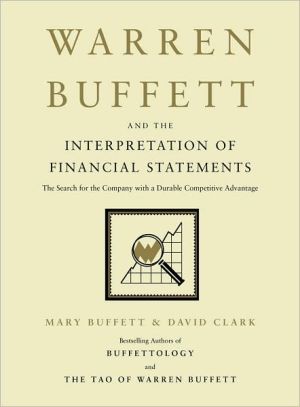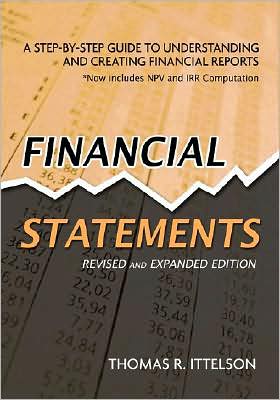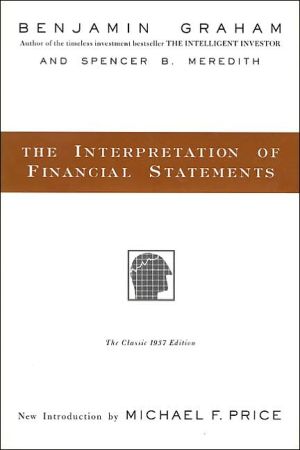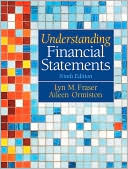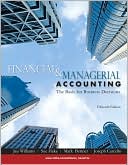Financial Accounting, Vol. 10
Search in google:
A market-leading program, Financial Accounting provides business students and accounting majors with a comprehensive introduction to practices and procedures. The text is well known for its highly respected author team, balanced approach, and real-world emphasis. Accuracy reviewers check every line and work through each exercise in the text and supplements, making Financial Accounting the most accurate among similar texts on the market. The Ninth Edition—which focuses primarily on the use of accounting information in today's business world—represents the most significant revision of the text to date. Content updates reflect current accounting and business practices, while greater attention is given to ethics, service enterprises, and international issues. In addition, the text features a more concise, accessible writing style; a new design to emphasize the user-oriented content; and enhanced technology components for both instructors and students.
Preface. CHAPTER 1. USES OF ACCOUNTING INFORMATION AND THE FINANCIAL STATEMENTS. Section 1.1. Accounting as an Information System. Section 1.2. Decision Makers: The Users of Accounting Information. Section 1.3. Accounting Measurement. Section 1.4. The Corporate Form of Business. Section 1.5. Financial Position and the Accounting Equation. Section 1.6. Financial Statements. Section 1.7. Generally Accepted Accounting Principles. Supplement: How to Read an Annual Report. CHAPTER 2. ANALYZING BUSINESS TRANSACTIONS. Section 2.1. Measurement Issues. Section 2.2. Double-Entry System. Section 2.3. Business Transaction Analysis. Section 2.4. The Trial Balance. Section 2.5. Cash Flows and the Timing of Transactions. Section 2.6. Recording and Posting Transactions. CHAPTER 3. MEASURING BUSINESS INCOME. Section 3.1. Profitability Measurement: Issues and Ethics. Section 3.2. Accrual Accounting. Section 3.3. The Adjustment Process. Section 3.4. Using the Adjusted Trial Balance to Prepare Financial Statements. Section 3.5. The Accounting Cycle. Section 3.6. Cash Flows from Accrual-Based Information. CHAPTER 4. FINANCIAL REPORTING AND ANALYSIS. Section 4.1. Foundations of Financial Reporting. Section 4.2. Accounting Conventions. Section 4.3. Classified Balance Sheet. Section 4.4. Forms of the Income Statement. Section 4.5. Using Classified Financial Statements. Supplement: The Annual Report Project. CHAPTER 5. THE OPERATING CYCLE AND MERCHANDISING OPERATIONS. Section 5.1. Managing Merchandising Businesses. Section 5.2. Terms of Sale. Section 5.3. Perpetual Inventory System. Section 5.4. Periodic Inventory System. Section 5.5. Internal Control: Components,Activities, and Limitations. Section 5.6. Internal Control over Merchandising Transactions. CHAPTER 6. INVENTORIES. Section 6.1. Managing Inventories. Section 6.2. Inventory Cost and Valuation. Section 6.3. Inventory Cost Under the Periodic Inventory System. Section 6.4. Impact of Inventory Decisions. Section 6.5. Inventory Cost Under the Perpetual Inventory System. Section 6.6. Valuing Inventory by Estimation. CHAPTER 7. CASH AND RECEIVABLES. Section 7.1. Management Issues Related to Cash and Receivables. Section 7.2. Cash Equivalents and Cash Control. Section 7.3. Uncollectible Accounts. Section 7.4. Notes Receivable. CHAPTER 8. CURRENT LIABILITIES AND THE TIME VALUE OF MONEY. Section 8.1. Management Issues Related to Current Liabilities. Section 8.2. Common Types of Current Liabilities. Section 8.3. Contingent Liabilities and Commitments. Section 8.4. The Time Value of Money. Section 8.5. Applications of the Time Value of Money. CHAPTER 9. LONG-TERM ASSETS. Section 9.1. Management Issues Related to Long-Term Assets. Section 9.2. Acquisition Cost of Property, Plant, and Equipment. Section 9.3. Depreciation. Section 9.4. Disposal of Depreciable Assets. Section 9.5. Natural Resources. Section 9.6. Intangible Assets. CHAPTER 10. LONG-TERM LIABILITIES. Section 10.1. Management Issues Related to Issuing Long-Term Debt. Section 10.2. The Nature of Bonds. Section 10.3. Accounting for the Issuance of Bonds. Section 10.4. Using Present Value to Value a Bond. Section 10.5. Amortization of Bond Discounts and Premiums. Section 10.6. Retirement of Bonds. Section 10.7. Other Bonds Payable Issues. CHAPTER 11. CONTRIBUTED CAPITAL. Section 11.1. Management Issues Related to Contributed Capital. Section 11.2. Components of Stockholders' Equity. Section 11.3. Preferred Stock. Section 11.4. Issuance of Common Stock. Section 11.5. Accounting for Treasury Stock. CHAPTER 12. THE CORPORATE INCOME STATEMENT AND THE STATEMENT OF STOCKHOLDERS' EQUITY. Section 12.1. Performance Measurement: Quality of Earnings Issues. Section 12.2. Income Taxes. Section 12.3. Nonoperating Items. Section 12.4. Earnings per Share. Section 12.5. Comprehensive Income and the Statement of Stockholders' Equity. Section 12.6. Stock Dividends and Stock Splits. Section 12.7. Book Value. CHAPTER 13. THE STATEMENT OF CASH FLOWS. Section 13.1. Overview of the Statement of Cash Flows. Section 13.2. Analyzing Cash Flows. Section 13.3. Operating Activities. Section 13.4. Investing Activities. Section 13.5. Financing Activities. CHAPTER 14. FINANCIAL PERFORMANCE MEASUREMENT. Section 14.1. Foundations of Financial Performance Measurement. Section 14.2. Tools and Techniques of Financial Analysis. Section 14.3. Comprehensive Illustration of Ratio Analysis. CHAPTER 15. INVESTMENTS. Section 15.1. The Management Issues Related to Investments. Section 15.2. Short-Term Investments in Equity Securities. Section 15.3. Long-Term Investments in Equity Securities. Section 15.4. Consolidated Financial Statements. Section 15.5. Investments in Debt Securities. Appendix A. Accounting for Unincorporated Businesses. Appendix B. Future Value and Present Value Tables. Answers to Stop, Review, and Apply Questions. Endnotes. Company Name Index. Subject Index.

